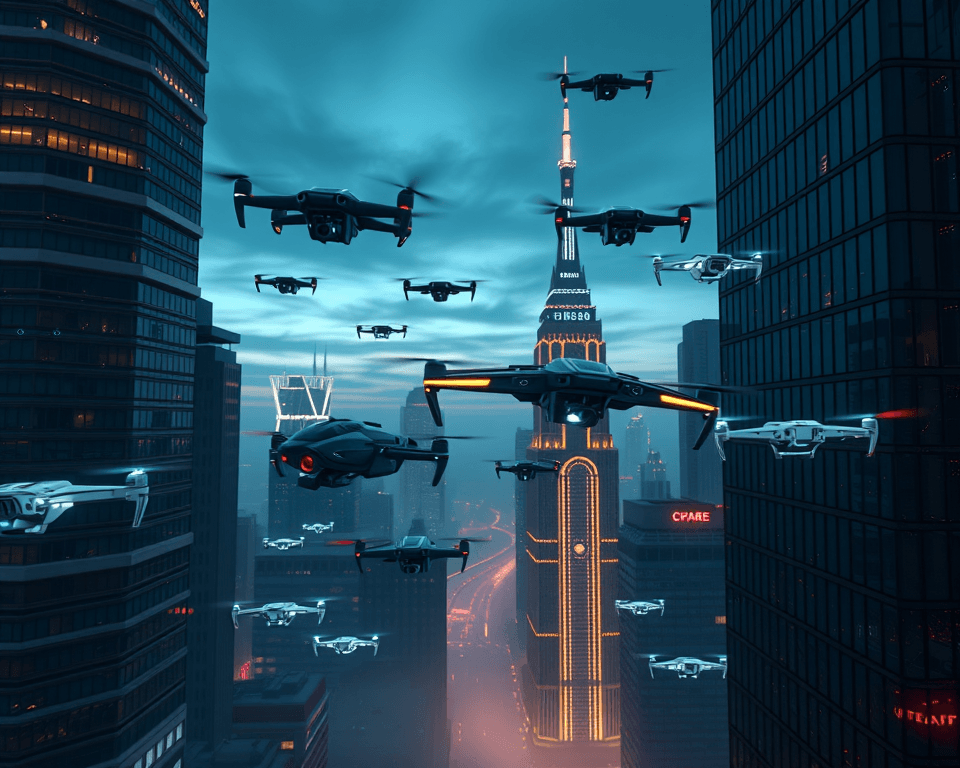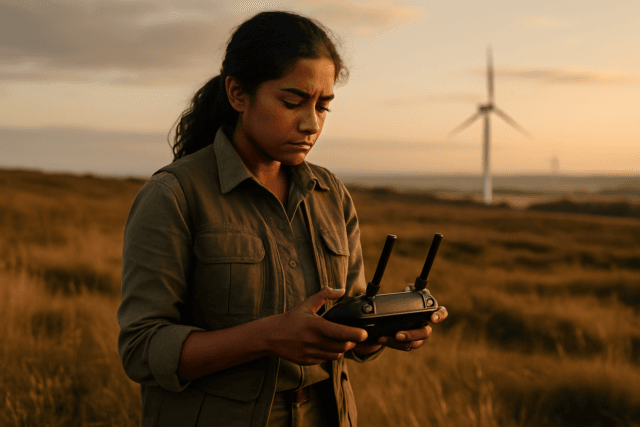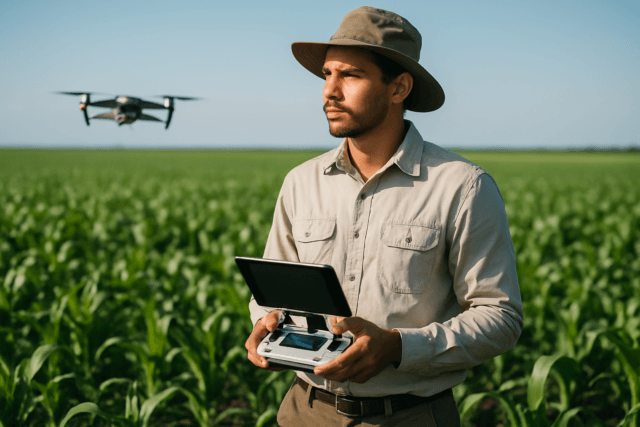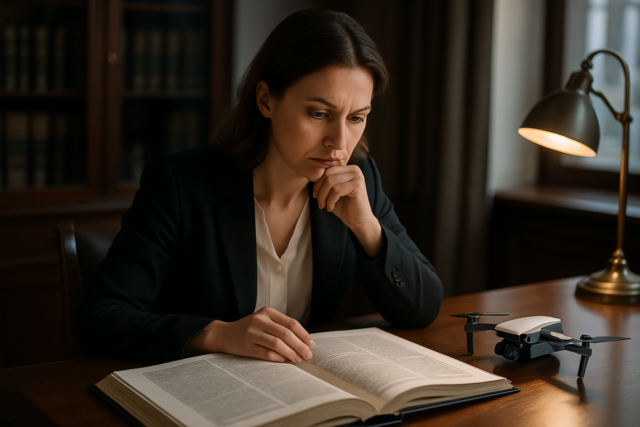Drones have rapidly evolved from simple remote-controlled aircraft to sophisticated tools used across various industries. But what exactly is a drone? This article explores the definition, history, types, applications, and regulations surrounding these versatile unmanned aerial vehicles (UAVs).
What is a Drone?
A drone, more formally known as an unmanned aerial vehicle (UAV) or unmanned aircraft system (UAS), is an aircraft without a human pilot on board . Instead, drones are controlled remotely by a pilot on the ground or autonomously via pre-programmed software and GPS . Drones use aerodynamic forces to provide lift and can carry various payloads, whether lethal or non-lethal .
A Brief History of Drones
The concept of unmanned flight dates back centuries. Here’s a look at some key milestones:
- 1783: The Montgolfier brothers demonstrated the first unmanned hot air balloon in France .
- 1849: Austrian forces used balloon carriers to launch incendiary balloons at Venice in the first offensive use of air power .
- 1898: The first radio-controlled craft was developed .
- Early 1900s: Significant drone development began, initially focused on providing practice targets for military training .
- 1916: A.M. Low’s “Aerial Target” was an early attempt at a powered UAV .
- World War I: Radio-controlled airplanes were used to attack zeppelins .
- 1935: Britain produced radio-controlled aircraft for target practice, and the term “drone” may have originated from the DH.82B Queen Bee model .
- World War II: The US developed the “Radioplane” (Curtiss N2C-2) for training anti-aircraft gunners .
- Vietnam War: Reconnaissance UAVs were deployed on a large scale .
- 1970s-1990s: Advances in computerization, miniaturization, and GPS led to the development of modern drones like the Predator .
- 21st Century: Drones have become essential assets to most militaries and have expanded into numerous non-military applications .
Essential Drone Components
Drones rely on a combination of hardware and software to operate effectively :
- Power Source: Batteries (electric), fuel (internal combustion), hybrid systems, hydrogen fuel cells, or solar power .
- Rotors, Propellers, or Wings: Generate lift . Multi-rotor designs, especially quadcopters, are common for vertical takeoff and landing (VTOL) . Fixed-wing drones rely on forward movement to generate lift .
- Frame: Typically made of lightweight composite materials .
- Flight Controller: Manages the drone’s movement, stability, and orientation .
- Navigation System: GPS communicates the drone’s location to the controller. Altimeters help maintain specific altitudes .
- Sensors: Including ultrasonic, laser/lidar, time-of-flight, chemical, thermal, hyperspectral, and obstacle avoidance sensors .
- Camera: Streams real-time video to the pilot .
- Controller: Allows the operator to launch, navigate, and land the drone remotely .
- Ground Control Station (GCS): Hardware and software that allow operators to communicate with the drone .
Types of Drones
Drones can be classified based on several factors, including wing type, weight, range, power source, and degree of autonomy . Here are some common classifications:
By Wing Type:
- Multi-Rotor: Quadcopters, hexacopters, and octocopters are common, offering vertical takeoff and landing capabilities. They are suitable for aerial photography and videography .
- Fixed-Wing: Resemble traditional airplanes and are efficient for long-distance flights. They are often used for aerial mapping, surveillance, and agriculture .
- Single-Rotor: Similar to helicopters, with one main rotor and a tail rotor for stability. They offer higher payload capacity and longer endurance but are less common due to their complex design and higher cost .
- Hybrid VTOL: Combine the features of fixed-wing and multi-rotor drones, allowing for vertical takeoff and landing with efficient forward flight .
By Size and Weight:
- Small/Mini Drones: Typically weigh between 200-1000 grams and are used for recreation, photography, and indoor inspections .
- Tactical Drones: Larger than small drones but not bulky .
- Reconnaissance Drones: Can be quite large, with long flight times and high altitudes .
- Large Combat Drones: Used for military operations .
By Function:
- Photography Drones: Equipped with high-resolution cameras and stabilization systems .
- Delivery Drones: Designed for transporting packages and goods .
- Recreational Drones: Used for personal enjoyment and aerial photography .
- GPS Drones: Utilize GPS for navigation and autonomous flight .
- Endurance Drones: Designed for long flight times .
- Racing Drones: Built for speed and agility .
By Level of Autonomy:
- Remotely Piloted Aircraft (RPAs): Operated remotely by a pilot .
- Autonomous Drones: Can fly without direct control, using software and sensors .
Applications of Drones
Drones have found applications in a wide array of industries :
- Military: Surveillance, reconnaissance, and combat operations .
- Agriculture: Crop monitoring, field mapping, pest detection, and precision irrigation .
- Photography and Videography: Aerial shots for film, real estate, and personal use .
- Delivery Services: Transporting packages, food, and medical supplies .
- Search and Rescue: Locating missing persons and assisting in disaster management .
- Infrastructure Inspection: Inspecting bridges, power lines, and other infrastructure .
- Law Enforcement: Surveillance, crowd monitoring, and crime scene investigation .
- Environmental Monitoring: Wildlife observation, pollution tracking, and climate change monitoring .
- Mapping and Surveying: Creating detailed maps and 3D models of terrain .
- Disaster Management: Assessing damage, delivering aid, and supporting rescue efforts .
- Security and Surveillance: Monitoring public events, industrial infrastructure, and sensitive areas .
- Logistics: Delivering goods faster and more efficiently, especially in rural or hard-to-reach areas .
Regulations and Safety
Drone operation is regulated by various aviation authorities, such as the Federal Aviation Administration (FAA) in the United States and the Civil Aviation Safety Authority (CASA) in Australia . These regulations aim to ensure the safety of people on the ground and other aircraft in the airspace. Common regulations include:
- Registration: Drones above a certain weight (e.g., 250 grams) must be registered with the relevant aviation authority .
- Pilot Certification: Commercial drone operators typically need to obtain a license or certificate .
- Altitude Limits: Restrictions on how high a drone can fly (e.g., 120 meters above ground level in Australia) .
- Visual Line of Sight: The drone must be kept within the operator’s visual line of sight .
- Restricted Areas: Drones are prohibited from flying near airports, populated areas, and emergency operations .
- Remote ID: Drones may be required to broadcast identification information .
It is crucial for drone operators to understand and comply with these regulations to avoid fines and ensure safe operation .
The Future of Drones
Drone technology continues to evolve rapidly, with ongoing developments in areas such as:
- Longer Flight Times: Improvements in battery technology and alternative power sources are increasing drone endurance .
- Enhanced Autonomy: Advanced AI and machine learning algorithms are enabling more autonomous flight capabilities .
- Improved Sensors: New sensors are expanding the range of data that drones can collect .
- Expanded Applications: Drones are being explored for use in new and innovative ways across various industries .
Drones have emerged as a transformative technology with diverse applications, and their future potential seems limitless . As technology advances and regulations evolve, drones are poised to play an increasingly significant role in various aspects of our lives.





